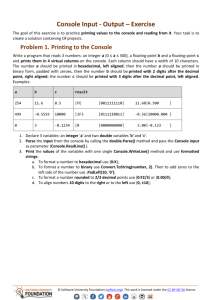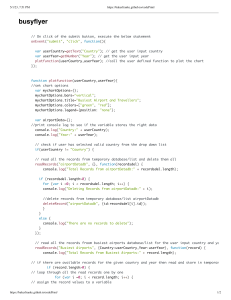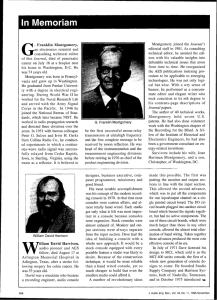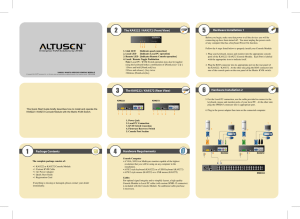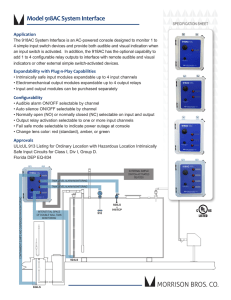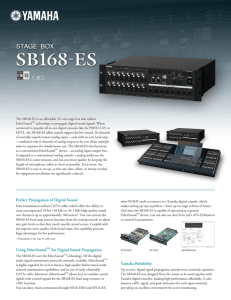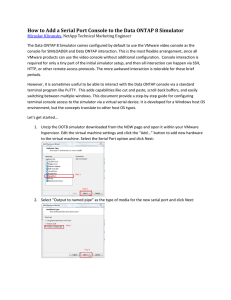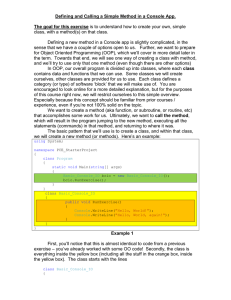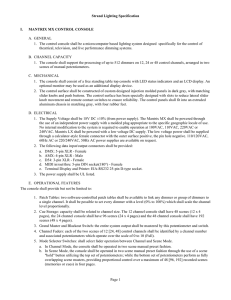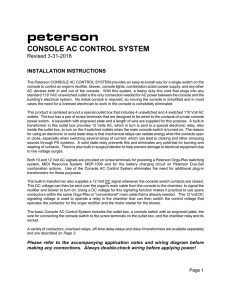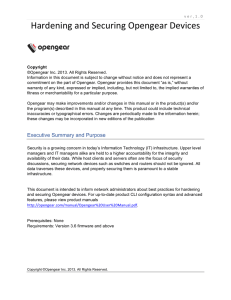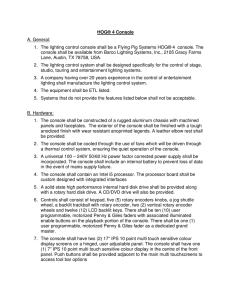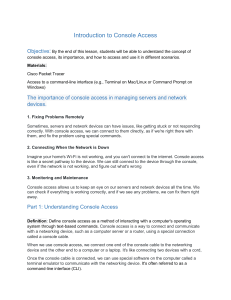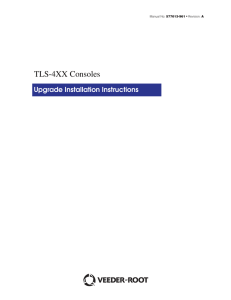Document 14409867
advertisement
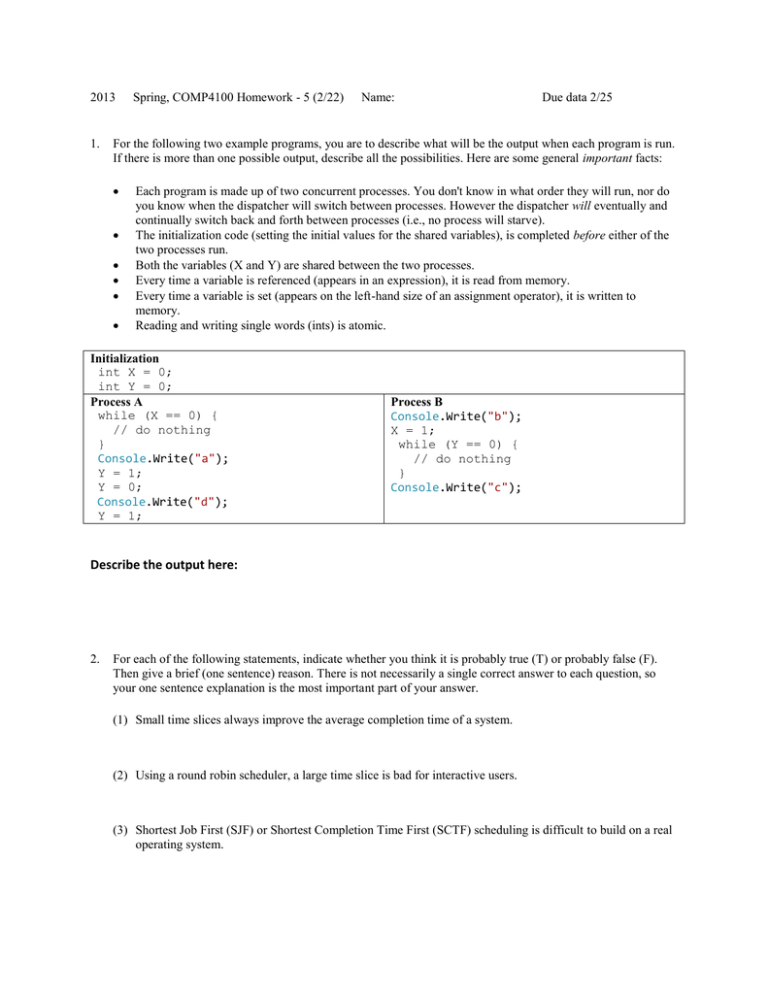
2013
1.
Spring, COMP4100 Homework - 5 (2/22)
Name:
Due data 2/25
For the following two example programs, you are to describe what will be the output when each program is run.
If there is more than one possible output, describe all the possibilities. Here are some general important facts:
Each program is made up of two concurrent processes. You don't know in what order they will run, nor do
you know when the dispatcher will switch between processes. However the dispatcher will eventually and
continually switch back and forth between processes (i.e., no process will starve).
The initialization code (setting the initial values for the shared variables), is completed before either of the
two processes run.
Both the variables (X and Y) are shared between the two processes.
Every time a variable is referenced (appears in an expression), it is read from memory.
Every time a variable is set (appears on the left-hand size of an assignment operator), it is written to
memory.
Reading and writing single words (ints) is atomic.
Initialization
int X = 0;
int Y = 0;
Process A
while (X == 0) {
// do nothing
}
Console.Write("a");
Y = 1;
Y = 0;
Console.Write("d");
Y = 1;
Process B
Console.Write("b");
X = 1;
while (Y == 0) {
// do nothing
}
Console.Write("c");
Describe the output here:
2.
For each of the following statements, indicate whether you think it is probably true (T) or probably false (F).
Then give a brief (one sentence) reason. There is not necessarily a single correct answer to each question, so
your one sentence explanation is the most important part of your answer.
(1) Small time slices always improve the average completion time of a system.
(2) Using a round robin scheduler, a large time slice is bad for interactive users.
(3) Shortest Job First (SJF) or Shortest Completion Time First (SCTF) scheduling is difficult to build on a real
operating system.
3.
Producer P and consumer C share a bound buffer as shown in Fig. 1. P and C produces/consumers the items in
the following order: P produces item 1, 2, 3, 4, 5, C consumes item 1, 2, 3, 4, 5, P produces item 6, C consumes
item 6, 7. When P or C go to sleep? Show the buffer status.
Slot # Shared buffer
1
2
.
3
4
4.
Table 1 shows that there are four jobs in the queue. Job 1 arrived first, and 4 last. Their priority is given in
shown in the middle column (1 is the lowest, and 4 is highest), and CPU time is shown in right column. Assume
time quantum is 40 msec. Calculate the average turnaround and average wait time for the following algorithms.
(1) FCFS
Table 1
(2) SJF
(3) Priority
Job # Priority
CPU burst
(4) Round-Robin
(msec)
1
1
135
2
2
95
3
4
175
4
3
165


